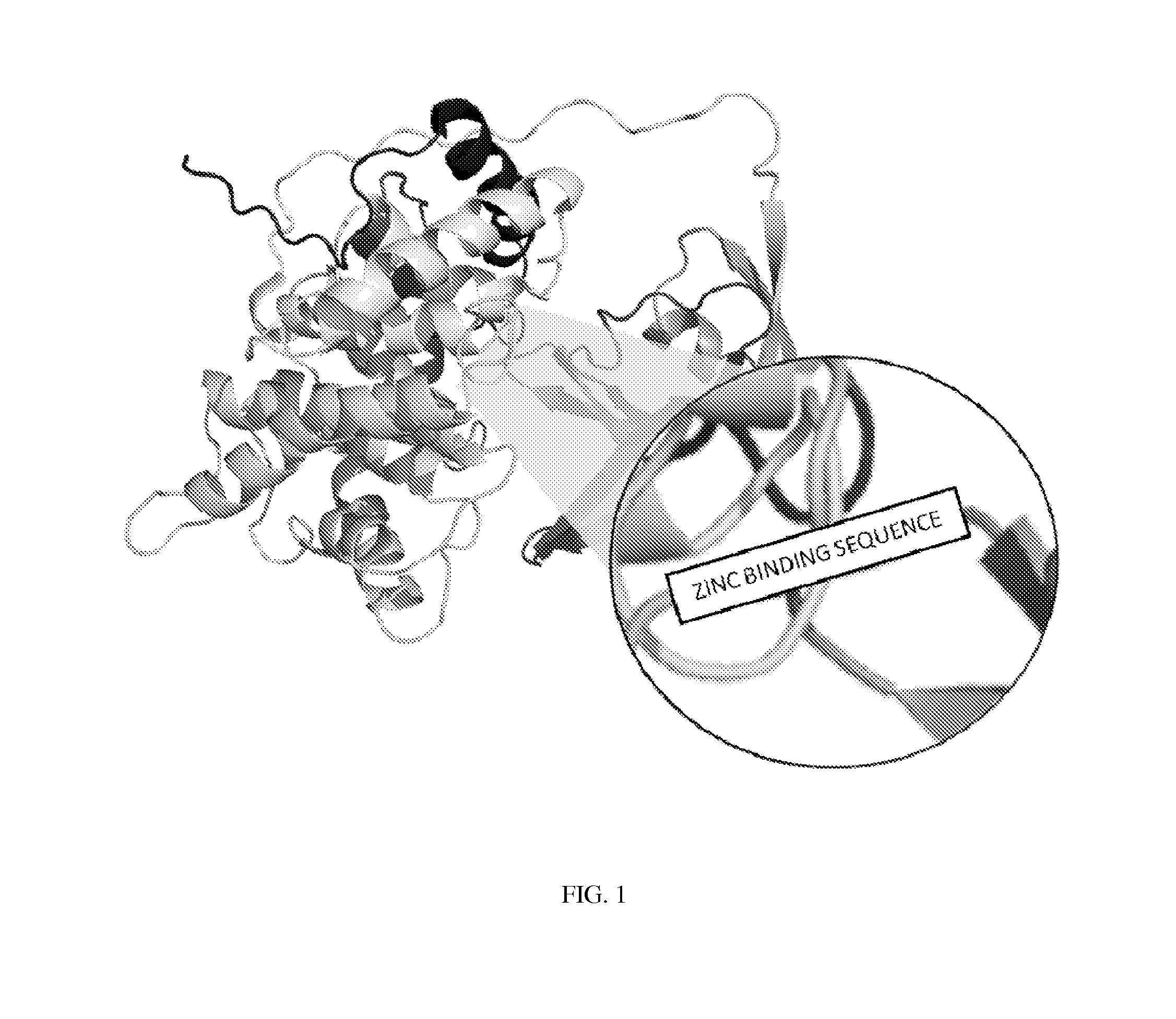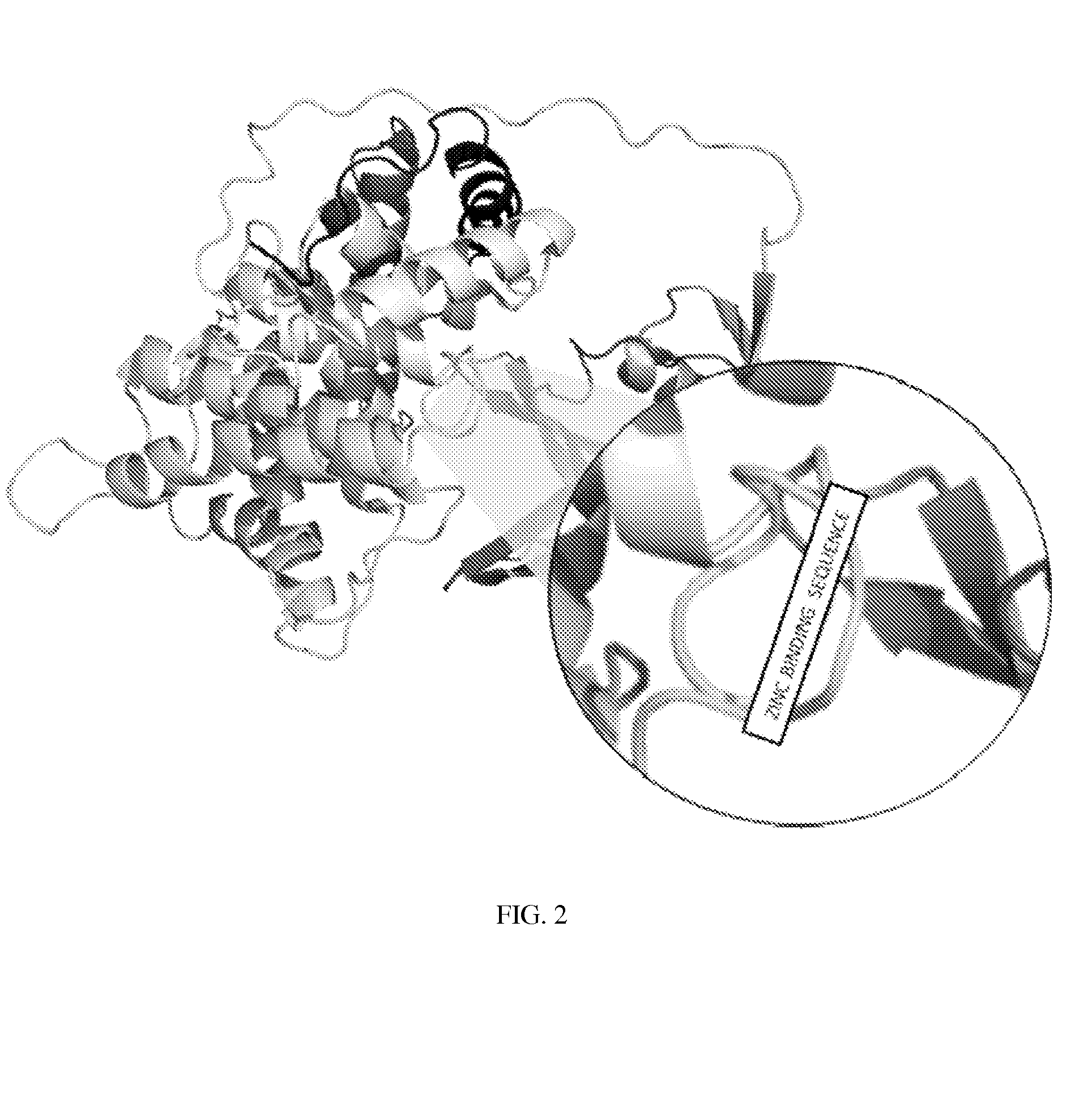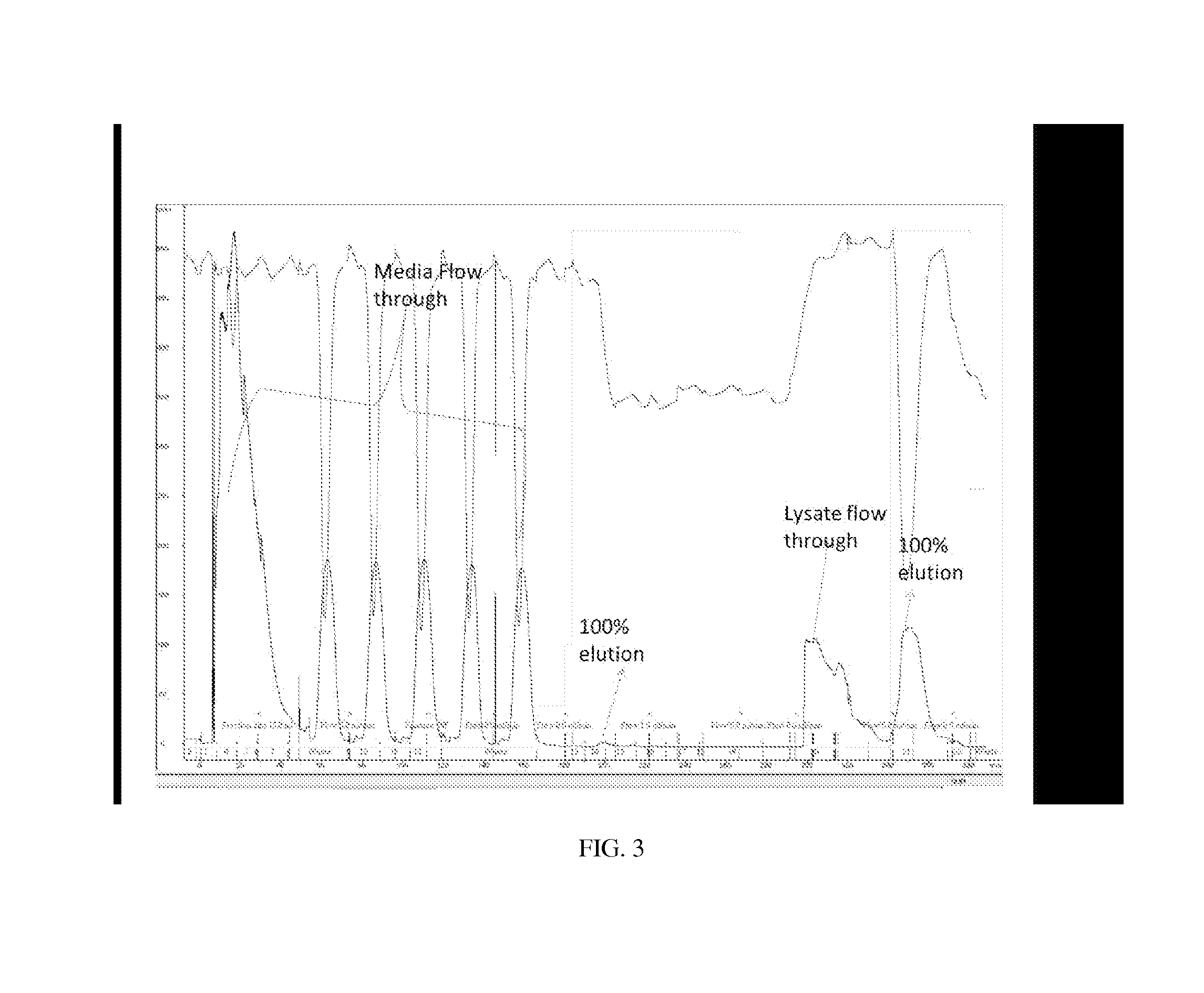Methods and systems for zinc delivery using intrinsic factor or haptocorrin
a technology of intrinsic factor and haptocorrin, which is applied in the field of methods and systems for oral delivery of zinc, can solve the problems of inability to treat zinc deficiency, and insufficient intake of zinc, so as to facilitate zinc supplementation
- Summary
- Abstract
- Description
- Claims
- Application Information
AI Technical Summary
Benefits of technology
Problems solved by technology
Method used
Image
Examples
example 1
Modified Haptocorrin Sequence
[0044]Referring to FIG. 2, another embodiment of the present invention comprises the modification of haptocorrin to replace at least a portion of the α-β interface region between the a domain (residues 1-287) and the β domain (309-410) with a zinc binding sequence. As with IF, this portion of haptocorrin is responsible for B12 binding, which is not necessary for the present invention.
example 2
Selection of Zinc Binding Sequences
[0045]Traditional zinc-binding domains that rely on histidine and cysteine for metal coordination, such as two invariant pairs of cysteine and histidine that coordinate a zinc atom, are not efficient below a pH of 3. As a result, in accordance with an embodiment the present invention relies on polycarboxylate coordination using the side chains of Asp and Glu. Polyaspartate tags are well-established effective metal chelators and will likely provide enough stability, even at a low pH. Specifically, in accordance with one embodiment, the present invention encompasses the following sequences:
G / A−(XG)n
G−((X3)G(X3))m−G
Xo
where X=Glu or Asp; n=4-7; m=2-3; and o=6-10, although many other variations and zinc-binding sequences are possible.
[0046]Zinc binding sequences may be evaluated to determine their binding affinities (Kd) to zinc, particularly with regard to the binding affinity of phytin to zinc. Sequences having a sufficiently high or higher affinit...
example 3
Location of Zinc Binding Sequences
[0047]Selecting the location within haptocorrin and intrinsic factor to insert the one or more zinc-binding sequences is also vital to the successful structure and function of the modified protein, including both zinc-binding and protection of the zinc as the protein travels through the stomach and into the small intestine. The selected location must result in a stable protein that can bind zinc and protect it from the environment of the stomach.
[0048]Preferably, for modified haptocorin for example, the selected location should result in a stable protein that is also capable of binding vitamin B12 in addition to the zinc. For example, the modified haptocorrin can bind the zinc in the bottom of the vitamin B12 pocket and then the vitamin B12 can subsequently bind within the pocket, providing additional protection. Haptocorrin consists of an α domain comprised of a helical barrel (residues 1-287) and a β domain comprised of β strands (residues 309-410...
PUM
| Property | Measurement | Unit |
|---|---|---|
| pH | aaaaa | aaaaa |
| binding affinity | aaaaa | aaaaa |
| concentrations | aaaaa | aaaaa |
Abstract
Description
Claims
Application Information
 Login to View More
Login to View More - R&D
- Intellectual Property
- Life Sciences
- Materials
- Tech Scout
- Unparalleled Data Quality
- Higher Quality Content
- 60% Fewer Hallucinations
Browse by: Latest US Patents, China's latest patents, Technical Efficacy Thesaurus, Application Domain, Technology Topic, Popular Technical Reports.
© 2025 PatSnap. All rights reserved.Legal|Privacy policy|Modern Slavery Act Transparency Statement|Sitemap|About US| Contact US: help@patsnap.com



